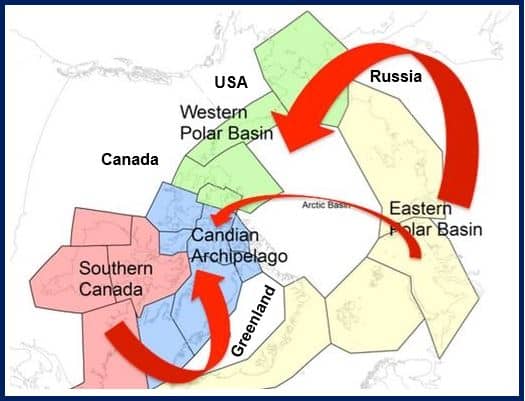Polar bears are moving northward because where many of them live no longer have persistent year-round sea ice, a recent study led by the US Geological Survey (USGS) informed. In other words, global warming appears to be pushing them northward.
The scientists found that the 19 recognized polar bear subpopulations group into four genetically-similar clusters, corresponding to ecological and oceanographic factors. These four clusters are the Western Polar Basin, Eastern Polar Basin, Canadian (Candian) Archipelago, and Southern Canada.
Within the last 1-3 generations, they have detected directional gene flow towards the Canadian Archipelago.
Lead author, Dr. Elizabeth Peacock, a USGS researcher, said:
“The polar bear’s recent directional gene flow northward is something new. In our analyses that focused on more historic gene flow, we did not detect movement in this direction.”
The scientists found that the predominant gene flow was from the Eastern Polar Basin and Southern Canada towards the Canadian Archipelago, where the sea ice is less likely to melt in the summer due to circulation patterns and cooler northern latitudes.
Recent directional gene flow. The movement is towards the area with more all year round sea ice. (Image: PLOS ONE)
By tracking polar bear gene types, the researchers found that they are moving northward.
The team worked out that in light of climate warming, the northern Canadian Archipelago is more likely to have abundant sea ice all year round compared to the other regions.
Peacock said:
“By examining the genetic makeup of polar bears, we can estimate levels and directions of gene flow, which represents the past story of mating and movement, and population expansion and contraction.”
“Gene flow occurs over generations, and would not be detectable by using data from satellite-collars which can only be deployed on a few polar bears for short periods of time.”
The polar bear’s move northward is a new phenomenon, says Dr. Peacock. (Image: Polar Bear Specialist Group)
The scientists found that female polar bears were more territorially bound to their regions of birth than the males. Tracking male polar bears is much more difficult because their necks are wider than their heads, making it impossible to collar them.
Their study also confirmed that polar bears today originate from one or several hybridization events with brown bears. There was no evidence of current hybridization between polar bears and brown bears in more than 2,800 samples examined in the latest study.
The scientists believe that the hybrid bears that have been observed in the Northern Beaufort Sea region of Canada are the result of a recent and currently localized occurrence.
Global warming means the availability of year-round sea ice is dwindling. (Image: USGS Alaska Science Center)
The researchers also found that in periods with more ice, polar bear populations expanded while those of brown bears shrank. In periods with less ice, it was the other way round.
The study was led by USGS and the Government of Nunavut (the largest, northernmost and newest territory of Canada), plus scientists from 15 institutions representing all five nations where polar bears live (Russia, Norway, Greenland, Canada and the US).
Citation: “Implications of the Circumpolar Genetic Structure of Polar Bears for Their Conservation in a Rapidly Warming Arctic,” Peacock E, Sonsthagen SA, Obbard ME, Boltunov A, Regehr EV, et al. PLoS ONE: e112021. doi:10.1371/journal.pone.0112021.



